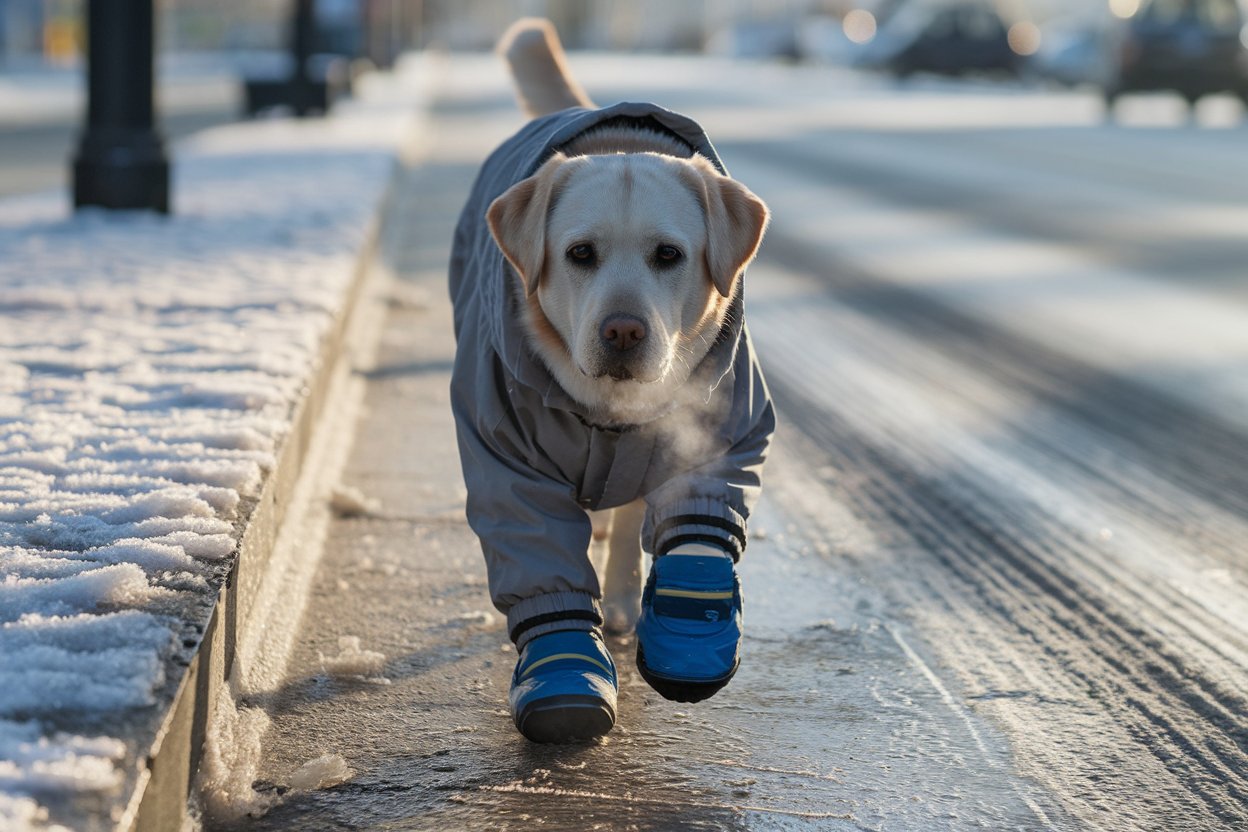
Sometimes, our furry friends need more than love to stay safe. Imagine walking barefoot on sharp rocks or icy pavements—that’s what your dog might feel!
Yes, vets recommend dog boots to protect paws from injuries, extreme temperatures, and harmful chemicals like de-icers.
When I first considered dog boots, I thought, "Will my dog even tolerate them?" But after learning about their benefits, I knew it wasn’t just about fashion—it was about protection.
Should dogs wear shoes in winter?
Winter can be magical, but it’s not always paw-friendly.
Yes, dogs should wear shoes in winter to protect against frostbite, ice, and salt burns.
Picture your dog running across icy roads1—painful, right? I once noticed my dog limping after a winter walk, and it broke my heart. Winter shoes2 became a game-changer.

Why are winter boots essential for dogs?
Winter poses these risks:
| Risks | Effects on Paws |
|---|---|
| Ice and snow | Causes cuts and frostbite |
| De-icing chemicals | Irritates skin, toxic if licked |
| Freezing temps | Leads to cracked pads |
Keep walks safe with boots designed for winter conditions.
What is an alternative to dog boots?
Not all dogs love boots; some just won’t wear them.
Paw balms or waxes can protect paws as an alternative to boots.
Once, my dog rebelled against boots, so I tried paw wax. It formed a protective layer that worked wonders.
Top alternatives to consider:
- Paw balms: Moisturize and shield from cracks.
- DIY booties: Wrap soft cloth around paws.
- Reusable adhesive pads: Lightweight and grippy.
Each option has its pros, but boots still offer the best coverage.
How long can you leave dog boots on?
Dogs might not tell you when they’re uncomfortable, so timing matters.
Dog boots should not be left on for more than 4-6 hours at a time.
My vet advised checking for signs of discomfort, like paw sweating or irritation, during longer wear.
Tips to ensure comfort:
- Choose breathable materials.
- Inspect paws after removal.
- Gradually increase wear time for new users.
How to make dog shoes stay on?
Getting dog boots to stay on can feel like solving a puzzle.
Use adjustable straps and size-specific boots to ensure they stay secure.
I’ve wrestled with floppy boots slipping off mid-walk, but learning these tricks helped:
Practical tips for a snug fit:
- Measure your dog’s paw width and length accurately.
- Opt for boots with Velcro or elastic closures.
- Double-check fit after fastening.
How long can dogs walk in snow without shoes?
Snow adventures are fun—until they hurt your dog.
Without shoes, dogs can walk for 15-30 minutes in snow before risking frostbite or cracks.
I limit snowy walks to protect my dog’s paws, especially in sub-zero weather.
Warning signs to watch for:
- Limping or lifting paws.
- Redness or swelling.
- Refusal to continue walking.
Do baby socks work for dogs?
Baby socks seem like a quick fix, but do they work?
Yes, baby socks can be a temporary solution indoors but lack durability for outdoor use.
I’ve used them at home to prevent slipping, but outdoors, they wear out too quickly.
When to use baby socks:
- Indoor protection on slippery floors.
- Post-surgery paw covering.
- Light use during mild weather.
Conclusion
Dog boots aren’t just accessories—they’re lifesavers. From icy winters to rocky trails, protecting your dog’s paws is essential. Whether it’s boots, wax, or even baby socks, choose what works best for your furry friend.










